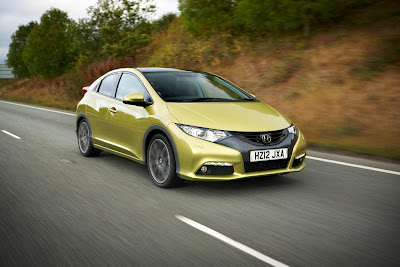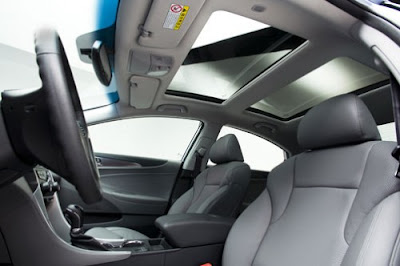Testing a mainstream production saloon on a Formula 1 race track doesn’t serve any real purpose except to tell you how quick you (and the car) really are. You don’t just cruise from apex to apex but end up driving the wheels off whatever you’re piloting. So the first couple of hot laps of the Catalunya circuit in Spain were enough to reveal how far forward BMW has taken the new 3-series’ driving dynamics and why it is still the master of the class.

The incredible chassis balance and the sheer fluency with which the new 3-series handles makes you flip for it instantly. It’s the delightfully neutral attitude through corners that makes the 3-series feel so special. Turn-in is deliciously sharp and the complete lack of understeer is just astonishing. With Sport+ mode selected, you can play with the throttle to tighten your line. And then there’s the steering. Unlike its predecessors, the new 3’s steering has a natural, fluid feel that is hard to associate with electrically powered units. It may not weigh up as much as you would like when you lean into corners but the delicate balance between effort and accuracy is what makes this steering truly brilliant.

But the true genius of the 3-series lies in its ability to mix sportiness and comfort in equal measure and without any compromise. And the key to this is actually a button which resides on the centre console. Standard on every new 3-series is the Driving Experience Control system — BMW-speak for a wide range of driving modes you can choose from. This system, though already available on the 5- and 7-series, is further enhanced for its 3-series debut by also offering an ‘Eco Pro’ mode, which tweaks the throttle map to eke out the best fuel economy.
The first thing that you become acutely aware of is the fantastic ride quality. Over uneven tarmac, in Comfort mode, the 3-series feels like its gliding, the quiet interiors adding to the almost eerie feeling. We are guessing this will be the default setting when it comes to India, but if you are fortunate enough to live in a place where the roads are open and good then the Sport and Sport+ modes are the ones to play with.
In Sport mode, the 3-series instantly feels more responsive. The steering, throttle and gearbox feel sharper and this sense is further enhanced in Sport+ mode, where the traction control switches to a more entertaining setting. What’s amazing is that, except over sharp ridges and bumps, the new 3-series is pretty comfy even in the stiffest Sport+ setting. The other revelation is the latest-generation run-flat tyres, which are no longer ride-corrupting, and this should finally silence the critics; us included.
BMW made available two of the four engine options at the International launch, and both of these are expected in India. The 320d gets the familiar 1995cc motor developing 181bhp from the previous 3-series, but it’s the 328i which gets an all-new, twin-scroll turbo, direct-injection petrol engine. This compact 2-litre, in-line four, replaces the naturally aspirated 3-litre, in-line six. It develops 242bhp, which means the 328i is marginally less powerful than the outgoing 330i, but it produces 16 percent more torque and being 45kg lighter, it’s actually quicker. Also a first on the 3-series is the same ZF eight-speed gearbox with paddle-shifters which debuted on the 5-series (though it was first seen on the 760Li), with an auto stop-start function as an option.

We first had a go in the 328i and immediately noticed there’s virtually no turbo lag. This engine pulls cleanly and hard from low revs and the quick-shifting eight-speeder complements the wide torque spread to give an instant burst of acceleration at any speed. In Sport and Sport+ mode, the transmission hangs onto lower gears much longer but even in the Comfort setting the brilliant engine-gearbox combo makes light work of any drive. If there’s a fault it’s the bland-sounding exhaust note and that ultimate creaminess at high revs you can only get with a six-cylinder. For that, you will have to wait for the 335i which will follow the 328i into India.
As you’d expect, the 320d is slower on paper than the 328i and this was most obvious on the Catalunya track. But on the road, the diesel 3-series packed quite a punch and the strong mid-range makes it feel more potent. At high revs the engine has that familiar gruffness and is not the most silent of diesels but that’s not to say the noise is obtrusive.
The cabin is also a step up from before with a noticeable increase in legroom at the rear and better overall comfort, but it doesn’t wow you like the rest of the car. Though the interiors have a sharper design and quality details abound, it has the same understated feel that is a bit too functional. The dashboard is more driver-oriented than before, with the centre console tilting slightly inwards, and there are lots of bits borrowed from the 5-series like the switchgear and other controls.
In fact, underpinning the brand new chassis is a lot of 5-series architecture. The 3-series gets double wishbones in the front for the first time and a multi-link Z-axle at the rear. The platform has also been engineered to accommodate four-wheel-drive variants.
If the way the 3-series drives doesn’t excite you enough then the styling certainly will. This sixth-generation (F30) 3-series is bigger and more muscular than before and you just can’t miss the distinctive bonnet that bulges forward, or the stunning headlights which extend inwards to meet the squat kidney grille. Double swage lines that run under the base of the window and along the door-handle line are another great piece of design detail. The rear looks more straightforward but the wider track gives it a nice, squat stance.
It was really hard to fault the new 3-series but a more critical evaluation can only be expected when the car hits Indian shores before the middle of 2012. For BMW’s rivals, that’s a breather they need to make the most of. For customers it’s time to muster the approximately Rs 26 lakh asking price for the base 320d or around Rs 35 lakh (both ex-showroom) if you fancy the top-spec 328i. This is one car that’s going to be hard to beat.
Fact File
Price Range (in lakhs)*
| Ex-showroom price | Rs 35 lakh (petrol), 26 lakh (diesel) (est. ex-showroom) |
Engine
| Fuel | Petrol, diesel |
| Installation | Front, longitudinal, RWD |
| Power | 242bhp at 5000-6500rpm (petrol), 181bhp at 4000rpm (diesel) |
| Torque | 35.69kgm at 1250-4800rpm (petrol), 38.75kgm at 1750-2750rpm (diesel) |
Transmission
Dimensions
| Length | 4624mm |
| Width | 1811mm |
| Height | 1429mm |
| Wheel base | 2810mm |
| Boot volume | 480 litres |
Chassis & Body
| Weight | 1430kg (Petrol)/1430kg (Diesel) |




















































